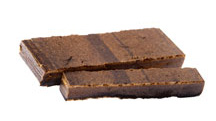Hashish - A Short History

The history of hashish parallels the history of cannabis to a great degree, since hashish is made from the resin of cannabis plants. For several thousand years, cannabis plants have been used medicinally and for the fibers that made strong fabric, but records of the use of hashish showed up much later. By about 900 AD, hashish use had spread through Arabia. At that time, the drug was consumed by eating it.
Hashish was featured in a story in the manuscript One Thousand and One Nights, also known as Arabian Tales. While the date of origin of many of these stories is hard to determine, much of the manuscript seems to go back to the tenth century.
Between 1000 and 1200 AD, the legend of hashish use by assassins in Persia arose. Some scholars claim that the name “hashish” traces back to the word for “assassin.” Whether true or not, by 1300 AD, Marco Polo had heard stories about hashish-using assassins and took these tales back to Europe with him.
By 1800, the drug had made its way to Europe, perhaps in part due to the exposure of Napoleon’s troops to hashish during his campaign to Egypt. At this point, European interest in hashish began to grow steadily as one botanist or doctor after another began promoting uses of cannabis in various forms.
In 1839, an Irish doctor stationed in India published the results of his use of cannabis and hashish on a number of diseases. He considered it an effective “anticonvulisum.”
By 1840, a French doctor, Louis Aubert-Roche, who had spent part of his life in Egypt, was using hashish in the treatment of disease. A few years later, literary figures in Paris, like Charles Baudelaire and Victor Hugo, were experimenting with hashish. For five years, several well-known writers and one doctor studied the effects of the drug. The doctor, Jacques Joseph Moreau de Tours, was a friend of Aubert-Roche. He made extensive studies on the use of hashish on animals and humans and decided it would be a good treatment for a psychiatric practice. Other doctors soon followed these examples. Shipments of hashish to Europe increased.
During the second half of the nineteenth century, cannabis and hashish continued to grow in popularity, with only a few practitioners warning about possible danger associated with its use.
Pharmaceutical companies in Europe and finally the US began to manufacture various preparations of cannabis, including extracts and tinctures. Patent medicines began to contain these preparations.
In 1899, A.J. Kunkel of Germany noted the deterioration that occurred in some African tribes who used cannabis frequently.
As the Nineteenth Century turned into the Twentieth, pharmaceutical companies began to replace cannabis compounds with vaccines, sleeping drugs like chloral hydrate, pain relievers like aspirin, and other drugs. This shift and the fact that cannabis and hashish products varied in potency and quality led to a decline in the medical use of cannabis.
In the 1960s, the increase in drug use connected with those interested in alternative lifestyles also increased awareness of hashish. In some parts of Asia like India and Nepal, the influx of Western tourists increased the volume of the drug trade, including sales of hashish. But in this time period, the use of hashish and cannabis was largely recreational and uncontrolled by medical supervision. Extensive use of hashish and cannabis began to result in cases of addiction and lasting mental disturbance.
Currently, most of the world’s hashish comes from Morocco but Afghanistan, Nepal and India are also source countries.
Resources:
- http://www.advancedholistichealth.org/history.html
- http://www.druglibrary.org/schaffer/hemp/arab1.htm
- http://en.wikipedia.org/wiki/One_Thousand_and_One_Nights
- http://www.emcdda.europa.eu/attachements.cfm/att_53374_EN_emcdda-cannabis-mon-vol1-ch1-web.pdf
- http://www.ncbi.nlm.nih.gov/pmc/articles/PMC2811144/
- http://bjp.rcpsych.org/content/178/2/116.full
- http://www.guardian.co.uk/world/2012/oct/08/afghan-families-cannabis-cultivation-opium
- http://www.emcdda.europa.eu/attachements.cfm/att_53371_EN_emcdda-cannabis-mon-vol1-ch12-web.pdf

 ®
®